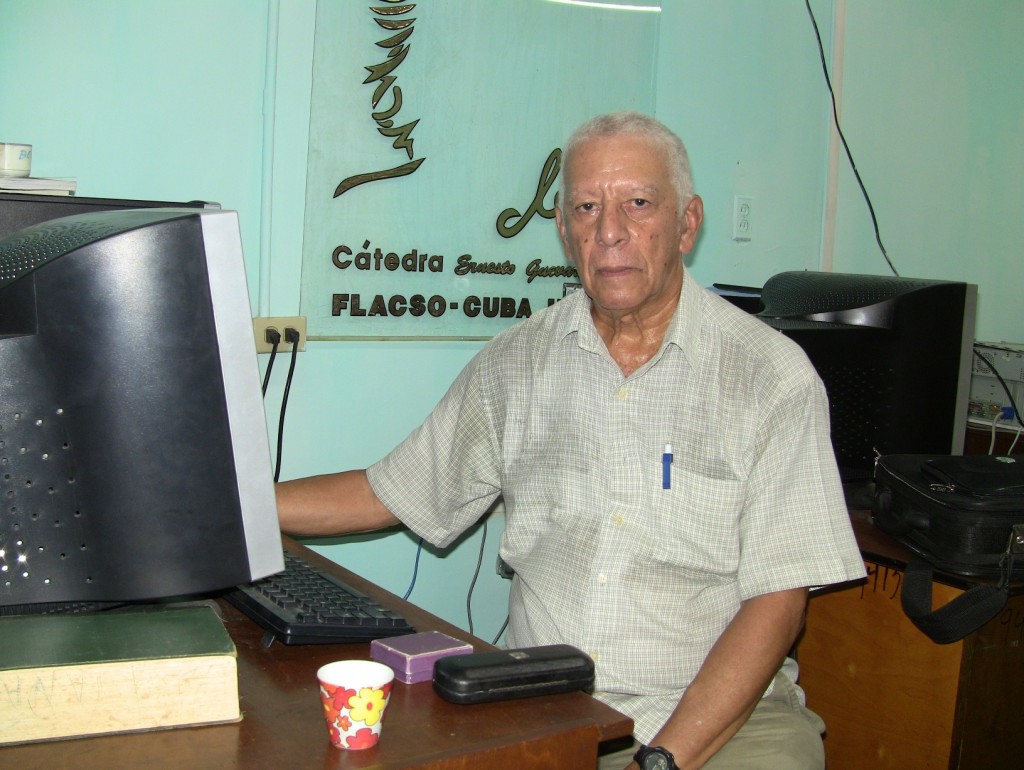The following is an interview I did with Professor José Bell Lara in September this year. I spent September in Cuba, trying to understand the economic system, some of the IT systems behind it all and how Cuban (students) see it all.
Edited versions of this interview was published in the Australian Links International Journal for Socialist Renewal as well as the Turkish language site soL. A short version in German was printed in Neues Deutschland. A Norwegian version was published in Rødt! Nr. 4 2010.
The Cuban state has been acting paternalistically
Interview with Dr. José Bell Lara, Professor at the Latin American Faculty of Social Sciences in Cuba (FLACSO-Cuba), University of Havana, Cuba
Dr. Bell Lara has written essays such as “Globalization and Cuban Revolution” (2002) and “Cuban socialism within Globalization” (2007) and is part of the International Advisory Board of the journal Critical Sociology.
This interview was conducted in connection with changes in the economic model of Cuba announced by the Cuban government in September 2010.
Johannes Wilm (JW): Welcome. I would like to start the interview by relating the Cuban revolution in the context of Latin America. In the northern part of Latin American there have been three leftist revolutions that have survived at least a few years during the last century: Mexico 100 years ago, Cuba a little more than 50 years and Nicaragua about 30 years ago. In the case of Mexico, the revolution ended in a deadly mix of corruption and neo-liberalism. Will the same happen in Cuba? Is it impossible to make such revolutions last for more than a certain number of years?
Jose Bell Lara (JBL): Well, the problem is in the nature of the revolution. What social forces made these revolutions? In the case of Mexico, the fundamental social force was largely rural. It was a revolution against the Porforio Diaz dictatorship. But the leadership of this revolution was in the hands of the middle classes. And their social project went no further than to install in Mexico a capitalism without the evils of the leader — ie the Porforio Diaz regime. And although there was a lot of participation by poor people, during the first decade of the revolution, most revolutionary leaders who had support amongst them were killed by other middle class revolutionaries. It happened to Zapata, who represented the south with its peasant population and the most radical revolutionary project. The same happened to Pancho Villa.
A new group assumes the leadership of the revolution and decides upon the direction of where the revolution was going: rebuilding a capitalism that was the Latin America equivalent of the European “welfare state”. It reaches its high point at the end of the 1930s, during the presidency of Lazaro Cardenas. During those years the oil is nationalized and there are a series of measures to increase living standards.
However, the restructuring of the ruling class in Mexico and the readjustment of Mexico to the world-wide capitalist system, always follows the general trend of the system. And the general trend of the system today is neo-liberalism, as just another phase. Because there is no competition with the Socialist camp anymore, all the social gains in Europe and America are being lost. And that is also the case of Mexico.

Continue reading Interview about future of socialism in Cuba

